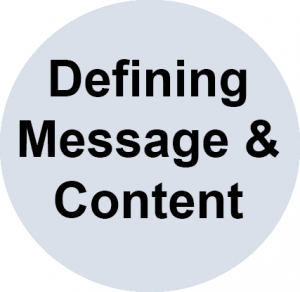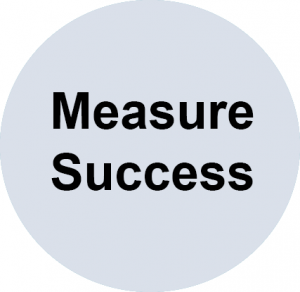28 Communication Tools and Strategies | Key Components of a Communication Plan | Define your audience and channels




Audience
The next step in developing an effective communications plan is to determine who your audience is. Building on the goals that you define in step one, you must now determine what audiences you need to reach in order to achieve this goal.
Below are some examples of key audiences based on the examples of desired outcomes provided in step 1.
| Desired Outcome / Goal | Examples of Target Audience |
| Recognition from industry partners | Industry partners |
| Recognition from the academic community | Specific academic journals, other researchers |
| Increased recognition by senior leadership at your institution | Senior Leadership, Research Chairs, Marketing and Communications department |
| Engagement and interest in your research from undergraduate and graduate students at your institution | Students, teaching assistants, teaching faculty, student clubs |
| Interest from media outlets about your research and academic activities | Marketing and Communications department, newspaper outlets, radio stations, television stations |
The importance of having a clearly defined target audience will be discussed further in Module 5: Community Engagement and the Lavis Model for KMb.
Channels
Once you have identified your target audience, you must determine the channels they use for communication. By determining the channels you target audience uses you will be able to target the channels that you should be using in order to achieve your communications goals.
For example, undergraduate students may be easier to reach on platforms such as a website or a flyer in the cafeteria, but may not be as active reading the Globe and Mail. On the other hand, senior leadership may be easier to reach through specifically targeted briefs, internal communications, networking opportunities, or word of mouth.
With this information in mind, ask yourself the following questions:
- Who is the audience?
- What platforms / channels does your audience use?
Some examples of platforms and channels include:
- Social Media – Twitter, Instagram, Facebook, etc. (covered in the next module)
- Media Outlets – Radio, television, newspapers
- Internal communications – newsletters, emails
- Networking / Word of mouth – conferences, events, presentations
We will discuss some of these channels / platforms throughout the rest of the module.
If you have more than one target audience you will have to complete this exercise multiple times for each segment. There may be an overlap in channels between your various target audiences but it is important to make sure you keep them separate for now as the content and message may be different for each. To start, it is recommended that you focus on your primary audience and return to your secondary audiences at a later time.

